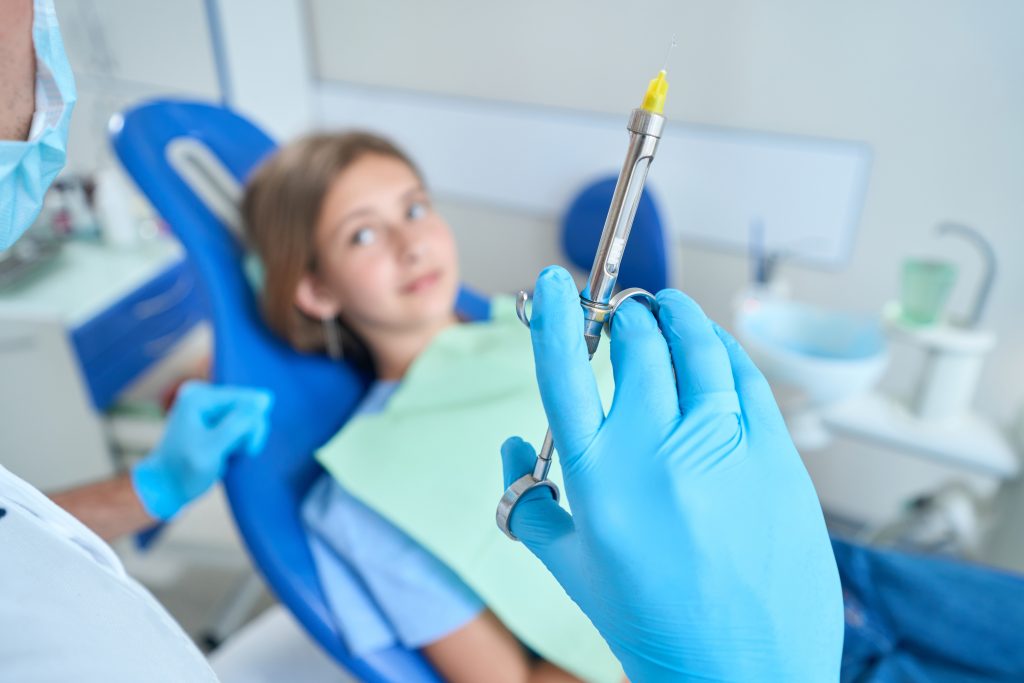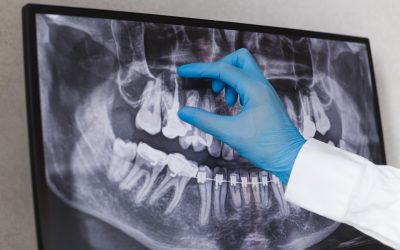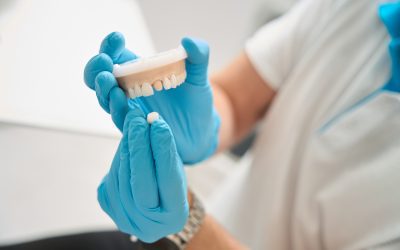Novocaine, once a popular anesthetic in dentistry, is no longer the go-to choice for dental procedures. So, what do dentists use instead of Novocaine?
Over the years, several safer and more effective alternatives have been developed and preferred by dental professionals. Each alternative anesthetic offers specific benefits and is chosen depending on the patient's needs and the complexity of the dental procedure. It's important to understand the different options available. In doing so, patients can feel more at ease during their dental appointments and trust dental professionals to provide them with a comfortable and safe experience.
The Novocaine Background
In 1905, Novocaine, generically known as procaine, was first synthesized. Before novocaine, dentists used cocaine as a standard local anesthetic in dental procedures. Novocaine became dentistry's next big local anesthetic since it had less addictive side effects than cocaine.
Novocaine worked by numbing a small, localized area, preventing pain and discomfort during dental treatments. However, over 30 years ago, dentists moved away from using Novocaine. One of the significant reasons for this shift is the development of newer and safer local anesthetics.
As dental professionals continue to prioritize patient comfort and safety, it becomes increasingly important to use alternate anesthetics that provide optimal results with minimal side effects. This focus on safety and efficiency is a crucial driving force behind the shift away from Novocaine in modern dentistry. With the availability of alternative local anesthetics, dentists have a range of reliable options that cater to their patient's specific needs and concerns.
Alternatives to Novocaine
By the 1980s, dentists had moved away from using Novocaine as the primary dental anesthetic. Dentists now rely on other local anesthetics to relieve pain during dental procedures. Several alternatives to Novocaine are commonly used today.

Lidocaine: A Commonly Used Local Anesthetic
Lidocaine has been the most popular anesthetic choice among dentists in the United States since 1948. Known for its rapid onset, longer duration of action, and reduced side effects, Lidocaine has become the gold standard in dental anesthetics.
Lidocaine is an amide-type anesthetic, which allows for a more predictable and longer-lasting numbing effect than ester-type anesthetics, such as Novocaine. Lidocaine is often used in combination with epinephrine, a vasoconstrictor that extends the duration of the anesthetic effect by slowing its absorption into the bloodstream.
Lidocaine is available in various concentrations, with 2% being the most commonly used solution in dental procedures. This anesthetic provides adequate pain relief and comfort for both the patient and the dental professional. Lidocaine has a rapid onset of action, typically taking effect within 2-5 minutes of injection and lasting for approximately 1-2 hours, depending on the specific procedure and individual patient factors.
Although Lidocaine is generally considered safe and effective, some patients may experience side effects or allergic reactions. In rare cases, patients who are allergic to Lidocaine may be given alternative local anesthetics, such as articaine or bupivacaine. It is essential for dental professionals to be aware of potential allergies and to conduct thorough patient history assessments prior to administering anesthesia.
In conclusion, Lidocaine has become the preferred local anesthetic in dentistry due to its reliability, rapid onset, and longer-lasting effects compared to Novocaine. Its versatility and compatibility with epinephrine make it an essential tool for pain management in dental procedures, ensuring patient comfort and optimal clinical outcomes.
Articaine: An Efficient Anesthetic Choice
Articaine is another widely used anesthetic in dental procedures. It is known for its potency and quick onset of action, making it a suitable alternative to both Novocaine and Lidocaine.
Dentists choose articaine for numerous reasons, in addition to its quick onset of action and longer-lasting effects. The main advantage of articaine is the depth of anesthesia it provides, allowing dentists to perform dental procedures with greater patient comfort.
Articaine is safe for use in patients of all ages and does not have a higher association with anesthetic-related adverse effects. However, it is essential to note that its use in children under four years is not advised, as no data supports its usage in this age group.
In conclusion, articaine is an efficient anesthetic choice for dental procedures in patients of suitable age, providing a viable alternative to Novocaine and other anesthetics. Its superior efficacy, safety profile, and flexibility in clinical use make it a popular choice for dentists and patients alike.
Mepivacaine: For Longer Procedures
Mepivacaine is yet another alternative to Novocaine commonly used in dental anesthesia. It was introduced in the 1960s and has retained its place as a valuable local anesthetic due to its properties and efficacy for various dental procedures.
One of the key advantages of mepivacaine is its longer duration of anesthesia compared to other local anesthetics. This is because it has a milder vasodilating ability, allowing it to maintain its anesthetic effect without needing a vasoconstrictor. This makes it particularly useful for lengthier dental procedures requiring sustained anesthesia, reducing the need for multiple injections.
Another benefit of mepivacaine is its suitability for use in medically compromised patients, who may risk complications due to elevated blood pressure or heart issues. Its milder vasodilating effects make it a safer option for such patients, allowing dentists to perform necessary procedures without causing adverse reactions.
In some parts of the world, mepivacaine is the third most widely used solution in dentistry after articaine and Lidocaine, showcasing its versatility and popularity among dental professionals.
When considering local anesthetics for dental procedures, mepivacaine is a reliable and effective option, particularly for patients who require longer durations of anesthesia or have medical conditions that may put them at risk with other anesthetics. Its properties and proven track record in the dental field have made it an essential tool in modern dentistry.
Bupivacaine: When Extra Pain Management is Needed
Bupivacaine is an anesthetic with a longer duration of action compared to Novocaine. It is often used in dental procedures that require extended pain relief, such as oral surgeries or implant placements. Bupivacaine is not commonly used in routine dental treatments, as its more prolonged analgesic action may not be necessary for most procedures.
In dental procedures, bupivacaine has been studied as an alternative to Lidocaine due to its extended duration of action. This can specifically benefit patients who experience heightened levels of pain or anxiety during dental treatments. Extended numbness may result in a more comfortable experience, potentially making patients more likely to continue seeking dental care.
However, it is essential to note that bupivacaine is not always the first choice for dental anesthesia. One reason for its less frequent use is the longer duration of soft tissue anesthesia, which can make some patients uncomfortable after the procedure. Despite this, dentists may opt for bupivacaine when extra pain management is necessary to ensure their patients are as comfortable as possible.
In summary, while Novocaine was once the go-to anesthetic in dental procedures, alternatives like bupivacaine benefit in certain situations. Dentists are continuously exploring various anesthetics to provide the best care for their patients, taking into account factors such as pain management needs, duration, and potential side effects. Bupivacaine stands as a viable option when extra pain management is needed in dental care.

Nitrous Oxide or ‘Laughing Gas'
In addition to these alternatives, dentists may also use nitrous oxide, widely known as laughing gas, as a sedative and additional pain management tool during dental procedures. Nitrous oxide is often co-administered with local anesthetics like Lidocaine for increased patient comfort.
Nitrous oxide is a colorless and odor-free gas. This gas is combined with oxygen, and patients inhale it slowly through a small mask when placed over the nose. It leaves patients conscious but dulls their pain and awareness, making them more relaxed during treatment.
While many dentists prefer nitrous oxide due to its safety and efficacy, it should be noted that its usage has declined in recent years. Some dentists have stopped using it due to the potential risks associated with its incorrect use as a gas. Notwithstanding, nitrous oxide remains a popular choice for patients as it offers multiple benefits, such as reducing sensitive gag reflexes, helping people feel more relaxed, allowing young children to sit still during their procedure, and helping individuals overcome dental anxiety or phobia.
The appeal of nitrous oxide as an anesthetic is partly due to its fast-acting nature and the fact that it's quickly reversible. This makes it suitable for all ages and a wide range of procedures in dental practice. Even though it's not as common as it once was, nitrous oxide remains an important alternative to other anesthesia options, such as local anesthetics like Lidocaine or Novocaine.
General Anesthesia Options
Dentists have recently moved away from using Novocaine as their anesthetic of choice for dental procedures. Instead, they now employ a variety of more effective anesthesia options with fewer side effects. Among these alternatives, there are three main types: local, topical, and general anesthesia.
Dentists commonly use local anesthesia for dental procedures, as it numbs a specific area of the mouth without affecting the patient's overall consciousness.
Topical anesthesia comes in the form of a jelly or gel that is applied to an area requiring numbing. This method is typically used for minor dental procedures or as a preliminary numbing agent before administering a local anesthetic injection.
Conversely, general anesthesia is employed in more extensive dental surgeries where the patient must be unconscious throughout the procedure. Dentists may utilize a combination of medications to achieve this state of deep sedation. The specific anesthesia options depend on the patient's medical history, the complexity of the procedure, and the dentist's expertise.
The Selection Process for Anesthetics
When it comes to dental procedures, selecting appropriate anesthetics is critical to ensuring patient comfort and safety. Over the years, the use of Novocaine has declined due to its potential for causing allergic reactions in some patients. Instead, dentists have turned to alternative anesthetic options that offer better efficacy and safety profiles.
Lidocaine has a lower risk of causing allergic reactions compared to Novocaine, making it a more suitable option for a broader range of patients.
Beyond Lidocaine, dental professionals may employ several other anesthetic alternatives in their practice, depending on the patient's specific needs.
In addition to injectable anesthetics, dental professionals may also utilize alternative methods of achieving anesthesia during procedures. Some of these alternatives include topical anesthesia, which can be applied directly to the oral tissues for minor procedures, and electronic dental anesthesia, which employs electrical currents to block pain signals without the use of needles. Other alternatives, such as jet-injectors and iontophoresis, utilize innovative technology to deliver anesthesia without the need for traditional injections.
Dentists take a comprehensive approach when selecting the appropriate anesthetic for each patient, considering factors such as the patient's medical history, the type and complexity of the dental procedure, and the potential risks and benefits of the chosen anesthetic agent. By doing so, dental professionals are able to effectively manage pain and discomfort during dental procedures while minimizing possible complications and ensuring the safety of their patients.
Effects and Risks of Alternatives
As discussed, Novocaine alternatives have been popular due to their effectiveness while reducing potential patient side effects. However, it is essential to understand the possible consequences and risks associated with these alternatives.
One key distinction between Lidocaine and Novocaine is their onset time. Lidocaine acts more quickly, providing faster relief to patients and allowing dental procedures to commence promptly. Lidocaine also tends to have lower allergy rates than Novocaine, thus reducing the likelihood of adverse reactions in patients.
Despite these advantages, alternatives like Lidocaine do have potential side effects. Some patients may experience minor discomfort, such as:
- Redness or swelling at the injection site
- Lightheadedness
- Nausea
- Muscle twitching
In addition to Lidocaine, some dental practices may offer sedation options like oral or IV sedation (general anesthesia) for more invasive procedures or anxious patients. Other practices may use laughing gas (nitrous oxide) to help manage pain and anxiety during more straightforward treatments.
Each of these methods comes with its own set of risks and benefits. For instance, laughing gas is generally considered safe, but some patients may experience dizziness or headaches as temporary side effects. On the other hand, IV sedation poses a higher risk of complications but may be more appropriate for patients undergoing lengthy or complicated procedures.
In conclusion, modern dental practices offer a range of alternatives to Novocaine, each with its own effects, risks, and benefits. Discussing these risks with your dentist when considering these local anesthetic alternatives is vital.
What Do Dentists Use Instead of Novocaine Wrap Up
Dentists no longer use Novocaine as their go-to anesthetic for dental procedures. Instead, they have shifted towards using more effective and safer alternatives like Lidocaine and Articaine. These alternatives allow dentists to provide more comfortable and successful dental treatments to their patients, ultimately improving dental care's overall experience and outcomes.
Regardless of which alternative a dentist chooses, various factors, such as a patient's medical history, allergies, and the complexity of the dental procedure, influence a dentist's choice of anesthetic. However, the ultimate goal is to ensure safe and effective pain control during dental treatments.

Frequently Asked Questions
What alternatives are there for dental numbing besides Novocaine?
Although Novocaine was once the most widely used local anesthetic in dentistry, it has been replaced by more modern medicines, such as Lidocaine. Lidocaine is now the most common local anesthetic dentists use for procedures like fillings, root canals, and extractions. Other alternatives are available, all with names that end in “-caine.”
How long does a Lidocaine dental injection last?
Lidocaine dental injections typically last between 1.5 to 2 hours. The duration depends on factors such as the location of the injection, the individual's metabolism, and the strength of the local anesthetic solution. If necessary, the numbing effect can be extended by adding a vasoconstrictor, like epinephrine, to the anesthetic solution.
Do Novocaine and Lidocaine belong to the same family?
Yes, both Novocaine and Lidocaine belong to the same family of local anesthetics called ester anesthetics. These drugs work by blocking nerve signals that transmit pain. Dentists have turned to Lidocaine and other newer alternatives because they have better numbing effects, last longer, and cause fewer allergic reactions than Novocaine.
What types of dental local anesthesia are available?
There are several types of local anesthesia available for dental procedures. The most common one used by dentists is Lidocaine. Other options include articaine, bupivacaine, and mepivacaine. Each option has unique properties, and your dentist will determine the most suited one based on the procedure's requirements and your medical history.
Is there a numbing gel used prior to dental injections?
Yes, dentists often use a numbing gel, also known as a topical anesthetic, on the injection site before administering the local anesthetic. This numbing gel helps minimize the discomfort associated with the initial needle prick. Topical anesthetics usually contain active ingredients like benzocaine, Lidocaine, or tetracaine.
Can a dentist numb your mouth without using a needle?
While the most common method for numbing the mouth involves the use of a needle, there are alternatives. Some dentists offer needle-free anesthetics, such as electronic anesthesia or nitrous oxide (laughing gas), for certain procedures. These options may be less effective than injections, but they can provide relief for patients with dental anxiety or a fear of needles.




